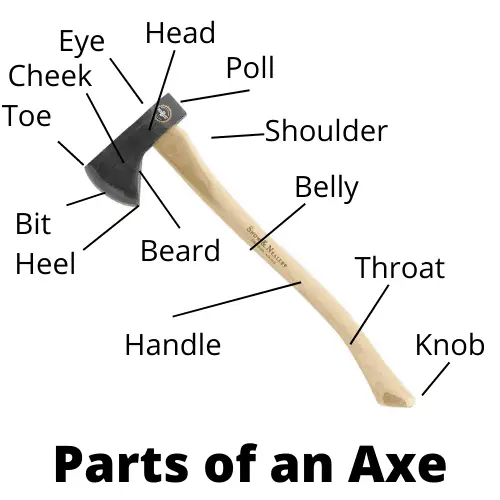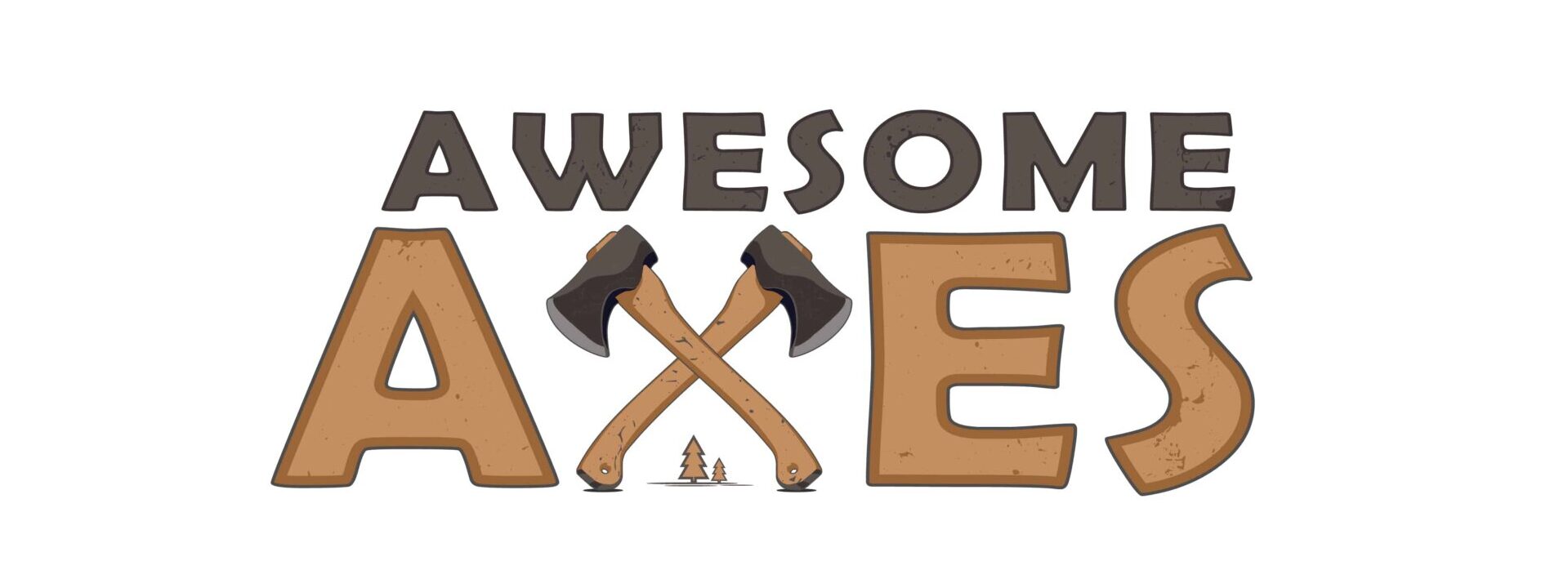An axe consists of two main parts: the axe head and the handle. The axe head features the cutting edge (blade), the butt (or poll), and the eye (hole for the handle). The handle, usually made of wood or composite materials, is designed for grip and leverage during use.
An axe is a tool primarily used in forestry and logging, but it also has many other uses. It is a type of single-edged blade that is attached to the end of a long handle. To describe all the different styles, you should understand the different parts of an axe.
The axe is used to cut down trees and branches, split firewood, and chop meat. The sharp edge of the axe head cuts wood by making deep cuts on either side of the wood to be removed.
When you read reviews of axes it can seem indecipherable. When I first started in the world of logging, I thought I was mishearing my colleagues when they started talking about an axe’s beard, bit, and belly.
So I have put together this comprehensive guide on the anatomy of an axe. With this glossary, you can understand and explain the differences between the most popular types of axe.

The axe is a valuable tool that has been around for centuries. It has two main parts, the head, and the handle.
An axe’s head is made of steel and mounted on a handle that is made of wood, metal, fiberglass or modern composite materials.
Let’s start with the components of the axehead.
Table of Contents
Head
The axe head is the metal part of the axe that is attached to the handle and has a sharpened edge used for cutting.
The shape and size of the head vary depending on its purpose. For example, a splitting maul has a blunt edge to split wood, while a hatchet has a sharp blade to cut small things like kindling.
The weight of the axe head is a critical axe specification. The heavier the axe head, the more difficult it is to wield, and the more power that can be applied. Generally, a heavier axe head will come with a longer handle.
The different shapes and styles can be described using the following terms.
Bit
The bit of an axe is the blade’s cutting edge that is opposite to the poll. You will often hear the words bit and blade used interchangeably. When steel was more expensive, the bit would be manufactured from higher quality steel than the rest of the axe head so that it was more durable and held its edge for longer.
Axes can be a single or double bit, with a double bit axe having two edges, one on each side of the axe head.
Toe
The toe of an axe refers to the top of the blade. The terms heel and toe are used to help explain blade placement. You will often hear loggers saying to their colleagues, “place the toe 2 inches high” or “careful that the heel misses that knot.”
The toe can also be very different shapes between axes – straight, such as in a Hudson Bay design, or curved upwards.
Heel
The heel of an axe refers to the bottom of the blade. Be aware that the heel of the blade and the beard are two separate items.
Beard
The beard describes the depth that the heel curves down below the shoulder of the handle. This is different from the actual heel of the blade but more describes the shape of the axe head. You will often hear of bearded viking axes with that stereotypical downwards curve of the axehead. This is also true of broad axes.
The longer the beard, the more cutting edge on the axe blade. A long beard can also be used as a hooking tool to rotate or move logs.
The beard gets its name from a human beard – when comparing an axe with a long beard to a short one, you can see the depth below the axe that explains where the name comes from.
Cheek
The cheek of an axe is the flat surface on the side of an axe head opposite the cutting edge. The cheeks of an axe can be different thicknesses called profile grinds. A limbing axe will have a concave grind while a splitting axe will have a convex shape. The change in shape helps the axe to perform its specialist task – splitting axes and mauls will have fatter cheeks to allow them to force firewood fibers apart.
Eye
The eye of an axe is the part of the handle that protrudes out the top of the handle. It is crucial to ensure that the axe head is securely attached to the handle. One of the upgrades historically between more old-fashioned axes and modern design is the change from circular to oval-shaped eyes which allowed the axe head to stay attached more tightly and allowed for more heavy-duty use.
Some axes that are forged as a single piece don’t have an eye. The head and handle are manufactured from the same piece of steel or composite.
Poll
The poll of an axe is the opposite side of the head to the blade. It can be made as a square shape to hammer or a spike to dig into the wood.
A double-bit axe doesn’t have a poll, but instead has a second blade.
A pulaski axe has a mattock blade or adze on the poll opposite the blade.
The poll is also called the butt of an axe.
Handle
An axe’s handle the part that you hold to use the tool. It is typically made from wood, plastic, fiberglass, or modern composite materials and can be either straight or curved.
The length of the handle can be changed depending on the size of the axe head and the purpose of the axe. The more force that needs to be applied the longer the axe handle. This is why felling axes have the longest handles and hatchets are much shorter.
You can also find axes with rubber coating or shock reduction grips that make the axe more slip-resistant and more comfortable when used extensively.
The following terms can be used to describe the axe handle is more detail.
Belly
The belly describes the front and middle of the axe handle. This part can often be curved as part of the design of the handle.
Shoulder
The shoulder is the piece of the handle directly below the axe head. You will often see a different shape to the rest of the handle to ensure there is more structural integrity at this point. Your top hand will generally grip just below the shoulder.
Double bit axes will often have a shoulder on both sides of the axe handle so it can be used in both directions.
Throat
The throat is the curved bottom section of the axe handle where your bottom hand grips. This shape is often curved forwards to fit more comfortably in your hand. This also allows more power to be applied without the risk of slipping. The shape of the throat in combination with the knob style dictates the position of the bottom hand.
Knob
The knob is the end of the handle that you hold on to. It’s usually round and can have a hole in it for a strap. The shape of the knob can change – some axes have a more pronounced knob to help prevent the axe handle from slipping from your hand. These different styles are also known as lambs foot, fawn foot, scroll-end, or swell-end handles.
